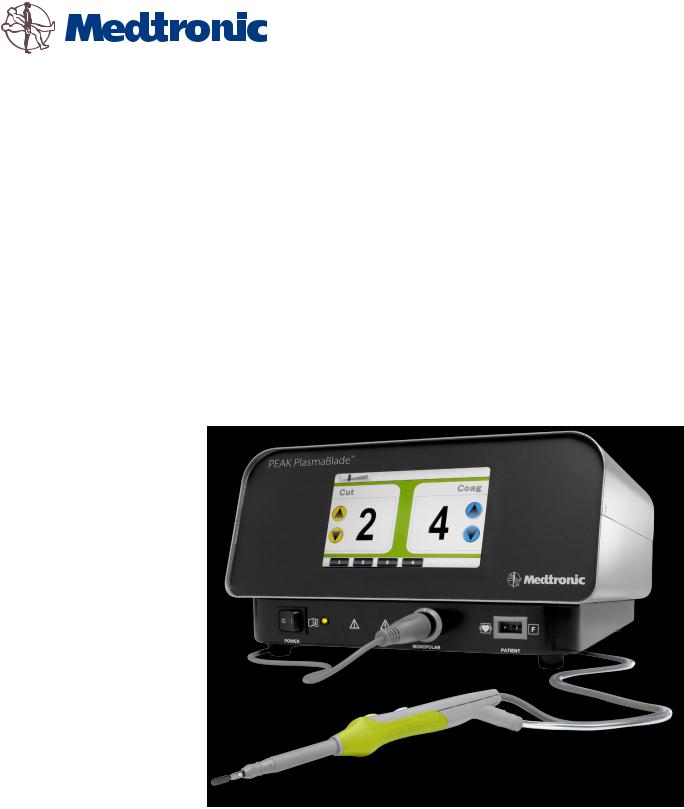Medtronic PULSAR User manual

PULSAR Generator Preventive
Maintenance Guide

Intended Use of this Document
WARNING: The information contained in this document is intended for the use of qualified personnel only. Biomedical technicians (e.g., ICC Certified Biomedical Equipment Technician [BMET]) or similar personnel performing the steps outlined here shall be fully familiar with all documentation on the functions, operations, warnings and components of the PULSAR/ PULSAR ll Generator. Serious injury can result if the activities described in this document are attempted by unqualified persons.
PULSAR Generator Preventive Maintenance Procedure
The PULSAR (and PULSAR II) Generator provides radio frequency (RF) energy to a disposable electrosurgical device. This combined system is used to perform electrosurgery. The generator is capable of delivering multiple CUT and COAG modes at various power levels when connected to a PEAK PlasmaBlade™ disposable device. Every disposable device (PEAK PlasmaBlade) has a memory chip with ten set points for CUT modes and ten set points for COAG modes. This chip specifies the output power for each set point. The generator reads this memory chip to deliver RF power.
Equipment Required
The following equipment will be required to complete the output power accuracy testing:
•PULSAR or PULSAR II generator
•A neutral electrode (return pad) connector with the pad cut off and the two leads shorted together.
•PEAK PlasmaBlade disposable device (any one of PEAK PlasmaBlade 4.0, 3.0S, TnA, Needle, or PLUS).
•Electrosurgical analyzer (ESU) (capable of measuring RF output at 1MHz and 460KHz).
•Oscilloscope and current sensing coil (both with 50 MHz capability).
Note: This equipment is required for cut modes 1-5 on both generator models.
Power Output Tests
See Appendix on page 4 for test procedure.
The Power Output Tests provide a means for the user to verify the accuracy of the RF energy output. The procedure to measure output power is as follows:
1.Connect the PEAK PlasmaBlade device to the generator under test.
2.Connect the tip of the PEAK PlasmaBlade device (metal needs to be exposed) to the ESU leads using an alligator clip.
3.Connect the shorted leads of the neutral electrode to the ESU leads using an alligator clip.
4.Set the load on the ESU to the value indicated on the appropriate table, (Table 1 for PULSAR II and Table 2 for PULSAR I). Refer to the ESU’s Instruction manual for set up instructions.
5.Power on the generator and adjust to the appropriate set point per the table.
6.Press the button (yellow for CUT and blue for COAG) on the PlasmaBlade device to activate RF. Measure the output power on the ESU. Refer to Tables 1 and 2 for accuracy of measured power depending on the type of device connected.
7.This should be repeated for all the values highlighted in blue italics at a minimum. Other values are presented for additional testing.
8.Per IEC 60601-2-2:
a.201.12.1.101 Accuracy of output control setting
For output powers in excess of 10% of the RATED OUTPUT POWER, the actual power as a function of the load resistance and output control setting shall not deviate from that shown in the diagrams specified in 201.7.9.3.1 by more than +/- 20%.
2
